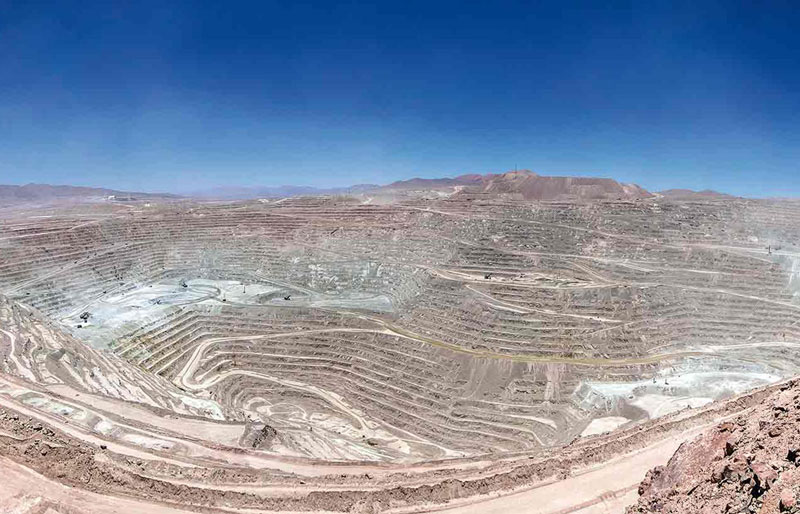BHP closed its fiscal year 2025 (June 30) with record copper production, exceeding 2 million tonnes at the group level. This result marks an 8% increase over the previous year, consolidating three consecutive years of growth. The Escondida mine in the Antofagasta region of Chile was key, recording its highest production in 17 years (1,305,000 tonnes), up 16% from 2024.
While Spence, also present in Chile, reached an all-time high with 268,000 tons, up 5%. In Australia, Copper South Australia closed out the year with solid results, setting quarterly records in June and the final quarter.
Mike Henry, CEO of BHP, highlighted that the company “achieved record iron ore and copper production, demonstrating the strength and resilience of our business.”
According to the company, Western Australian Iron Ore Operations (WAIO) broke multiple records, including annual production. South Flank exceeded its nameplate capacity in its first full year of operation. Efficiency in rail, port, and technological infrastructure was decisive. Steelmaking coal grew 5%, offsetting extreme rainfall and geotechnical challenges at Broadmeadow.
Henry highlighted the global context, saying, “Commodity demand has remained resilient in 2025, reflecting China’s ability to grow despite the US slowdown.” Copper and steel benefited from investments in renewable energy, power grids, and electric vehicle sales.
Not just copper: BHP investments and sustainability
The Jansen Stage 1 project (potassium in Canada) is 68% complete, although its cost has been revised upwards to between USD 7 billion and USD 7.4 billion, compared to the initial USD 5.7 billion. First production is planned for mid- 2027. For Jansen Stage 2, BHP is considering extending the schedule to fiscal year 2031 due to potential excess potassium supply.
In the sustainability field, BHP signed contracts with COSCO Shipping for two ammonia-powered cargo vessels , capable of reducing greenhouse gas emissions by 50% to 95% per voyage. Additionally, Copper South Australia collaborated with Aurizon on low-emission logistics solutions, and BHP and China Baowu advanced iron ore trials to decarbonize the steel industry.
Energy coal in New South Wales (NSWEC) exceeded its production targets , although it registered a slight 2% decline due to rainfall. BHP secured the extension of the Mt Arthur mine operations until 2030 and will explore a hydroelectric project with ACCIONA. In nickel, Western Australia Nickel reduced production by 63% after entering temporary suspension.
Quarterly Outlook and Performance
For fiscal year 2026, BHP projects copper production between 1.8 and 2.0 million tonnes. Iron ore production is expected to increase to 258-269 million tonnes, while steelmaking coal (SMC) could reach 18-20 million tonnes. Henry anticipated that “China’s 15th Five-Year Plan will give visibility to long-term growth policies.”
In the fourth quarter, copper production grew 1%, driven by record results at Copper SA and improvements at Spence. Iron ore increased 14% thanks to the performance of WAIO, which offset previous weather impacts. Steelmaking and power coal rose 31% and 13%, respectively, after recovering from extreme weather events.
Unit costs remain within guidance ranges. Escondida is at the lower end (USD 1.30–1.60/lb) and WAIO is in the upper half (USD 18.00–19.50/ton). Group capital expenditure will remain at USD 11 billion annually for 2026 and 2027.
Source: biobiochile.cl

